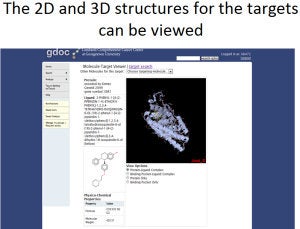Ligand Family Database

The LigFam database, developed by Dr. Sona Vasudevan at Georgetown University, is a comprehensive collection of detailed protein-ligand interaction data derived from solved structures from the Protein Data Bank. LigFam provides the scientific community with a high-quality manually curated resource of protein ligand and functional information. The database contains easily usable functional sites (binding and active sites), structure-guided alignments (identifies important conserved interactions across families of homologous proteins), ligand conformations (crucial for drug-design), SNP, mutation, and disease information (identifies important variations in the protein-ligand complex that could affect function as shown by mutation studies). The powerful search engine implemented on top of this manually curated database allows scientists to perform searches and to retrieve information that is not readily available from other public resources (e.g., NCBI). For example, it provides a mechanism for retrieving all cancer targets that have a common conformation for the ligand in the binding pocket. In addition, one can easily retrieve all SNPs that affect binding partners. These data are crucial to building a valid and information-rich drug discovery pipeline.
The LigFam database uses an approach called Ligand-centric that encompasses analysis at various sequence and structural levels. It is divided into four levels: residue, protein/domain, ligand, and family levels. At the residue level it includes identification of conserved binding site residues based on structure-guided sequence alignments of representative members of a PIRSF family and identification of conserved motifs. At the protein/domain level it includes SCOP folds, domain architectures, protein topology, structural elements comprising the binding sites and electrostatics. At the ligand level it includes ligand architectures, ligand conformations, ligand-clustering analysis, ribose sugar puckering and identification of conserved ligand atom interactions. Finally, at the family level it includes phylogenetic analysis.
The LigFam protein-ligand database provides a valuable infrastructure for research directed towards the development of new drugs and treatments, structure-based modeling, and identification of protein functions.
